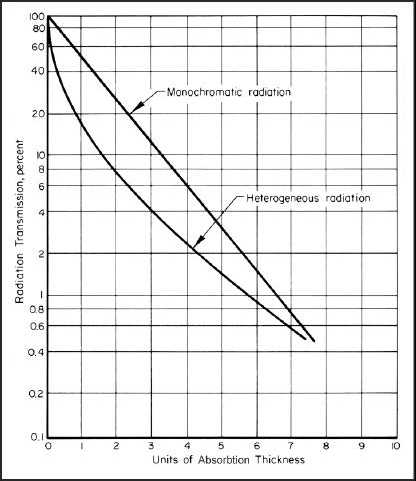T.O. 33B-1-1
6-40
6.5.2
Real Life Absorbers.
In industrial applications test specimens are being bombarded by the radiation photons which are absorbed and
scattered, and in the process electrons are ejected from the atoms of the test material. These absorbers are not ideal;
they do not act as an ideal absorber in that they do not attenuate radiation in accordance with theoretical physics.
Electrons degenerated scattered photons, characteristic radiation from the test material, and some of the primary beam
is all present on the film side of the test object simultaneously. The classical attenuation equation does not consider all
these various components, so it is not strictly applicable in actual radiographic practices.
6.5.3
White Spectrum.
Radiation generated by an X-ray tube contains various energies and therefore is referred to as white radiation (see
Figure 6-17). The X-rays are a continuous spectrum and the beam is selectively attenuated as it passes through an
absorber. The low energy radiation is highly absorbed by the first few layers of the absorber medium and the spectral
distribution is altered by this selective absorption. Thus, as the white radiation is being absorbed by an absorber it more
nearly approaches monochromatic radiation. Figure 6-17 shows a semi-logarithmic graph of the absorption of a
monochromatic beam and a multi-energy beam of white radiation. For approximate estimations of effective X-ray
attenuation coefficients, it may be assumed that the average energy of an X-ray beam is about 50 percent of the peak
operating kilovoltage for glass window tubes and 30 percent for beryllium window X-ray tubes.
Figure 6-17. Absorption Curves of Monochromatic and Multi-Energy Radiation.


